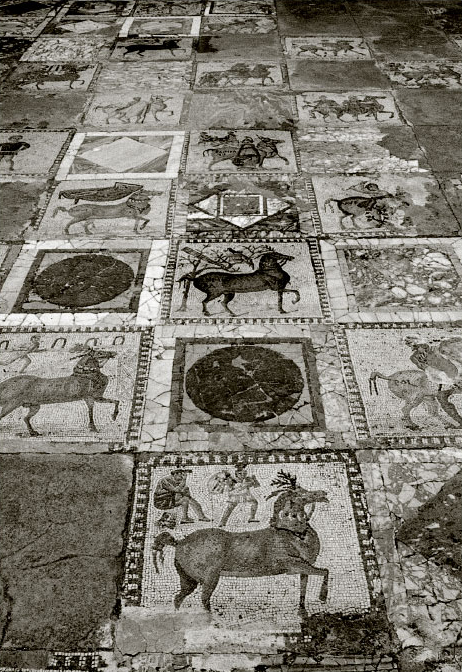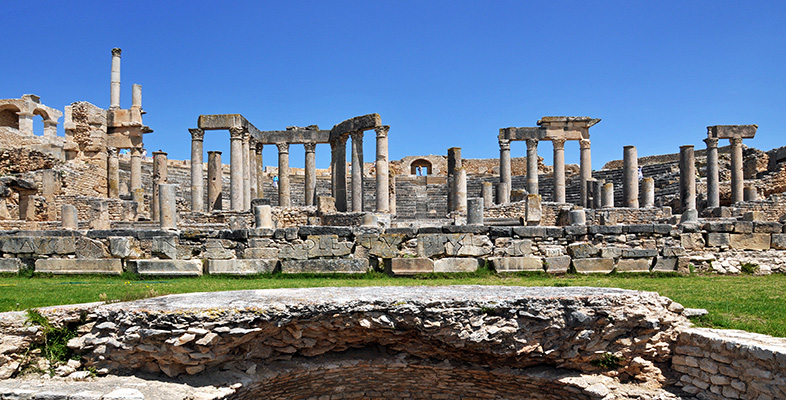2.7.3 Mosaics
The question of the mosaics can be considered at various levels. As a flooring technique its origin lies in the Hellenistic east, but in the Punic world plaster floors inset with small squared stones, sometimes in geometric patterns, are also known, as you have seen in the video of the houses at Carthage. So it's not possible simply to see mosaic floors as a part of Roman culture which came to be dominant in Africa, because mosaics themselves are not a purely Roman tradition. Nevertheless, it is not possible to see them just as an African phenomonen either, because what is represented on the mosaics often has a recognisable Roman component. The earlier mosaics from Acholla have compositional and stylistic similarities to painting and stucco in central Italy. Likewise many of the themes in figured mosaics can be related to Graeco-Roman mythology or Roman cultural practices such as the circus or amphitheatre (see Figure 7).

Taken as a whole the mosaics from Africa can be seen as distinct from those elsewhere, and together form a group which can be distinguished from mosaics common elsewhere. This suggests model 4, cultural fusion, is perhaps most appropriate.
